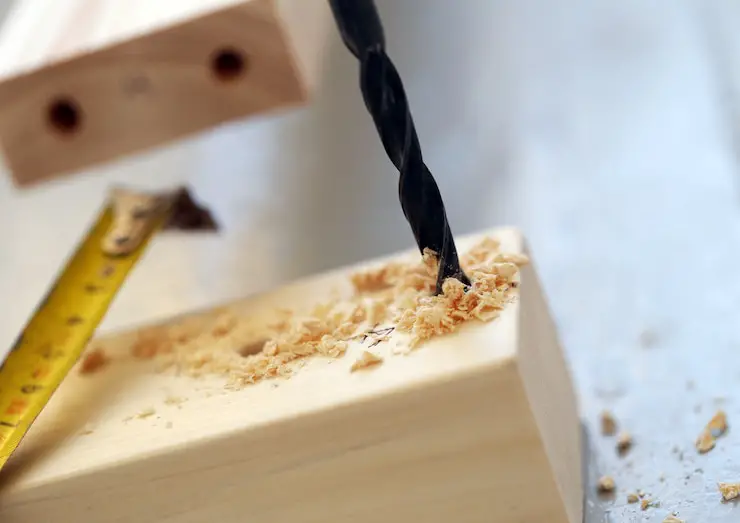Drill Press
The Basics of Woodworking Drill Bits for Beginners
If you’re interested in getting into woodworking as a hobby or as a profession, then congratulations! You’re in for a great time! For many people, though, the beginning steps of woodworking can seem daunting, especially when faced with the wide variety of drill bits out here. Woodworking drill bits are the accessories that allow you to make holes, grooves, notches, and much more in wood.
There are approximately 14 types of drill bits, depending on the type of setup you encounter, and in this post, we’ll highlight each one of them, exploring their characteristics, uses, advantages, disadvantages, and any other information you might need to work effectively with them.
The idea here is to give you a quick and comprehensive guide to the world of woodworking drill bits, hoping it will make your entrance into the world of woodworking as comfortable and enjoyable as possible.
Without further ado, let’s jump right in.
1. Twist Drill Bit
This is the most common and widely used woodworking drill bit out of them all and is likely the first picture you’ll have in mind whenever someone mentions a drill bit. It has a sharp point, a cylindrical shape, and two spiraling flutes that fall away from the dual edges at its tip. The flutes guide the wood shavings away as the drill turns against the wood.
You’ll usually find them made out of high-grade steel and coated with materials that add strength, reduce friction, and improve corrosion resistance, such as titanium. They are great for making pilot holes, enlarging holes, pre-drilling, and much more, and this versatility is one of their strongest advantages. For best results, use an awl as a starting point before you begin drilling to avoid potential skating.
2. Spade Bit
These are otherwise referred to as paddle or flat bits, the reason for this being rather obvious. They’re shaped like flat paddles with two sharpened edges that make them excellent cutters. They’re great for making relatively larger holes, although they will typically be rather rough at the edges.
This is why you’ll largely find them being used in large projects where the holes might be hidden such as construction.
3. Brad Point Bit
These are designed to create very precise holes in wood. They are a cross between twist and spade bits, with two cutting edges, a pointed tip, and two flutes. Thanks to its tip, there won’t be a need to use an awl before drilling, and the cutters form clean, crisp outlines.
These qualities make them ideal for making fine holes, such as those needed in dowel joinery in both hard and softwoods. While relatively more expensive than the bits we’ve previously mentioned, they make for an excellent addition to any woodworking drill bit set.
4. Pilot Point Bit
This is a modified twist bit, capable of creating a pilot hole and drilling with clean edges. It is even better at avoiding skating than a regular twist bit, which makes it excellent when it comes to drilling metal or wood. The only trouble you might have is pinpointing a place to start drilling.
5. Auger Drill Bit
If you’re looking to drill deep holes, an auger drill is what you’ll need. Thanks to its screw-like tip, it will keep on course as you drill while pulling the bit deeper into the wood. The bottom of the bit features dual spurs that will score a perfect circle that’s the same size as the hole you’re about to drill. As the two cutting edges clear material in the circle, the spiraling flutes work to remove the chips created.
These qualities make augers great for creating deep holes in large, deep pieces of wood for construction projects such as building decks and other forms of home construction. The only potential downside is that auger bits require more powerful drills to work with.
6. Forstner Drill Bit
Despite the fancy name, these bits function in much the same way as spade bits, except that they are more precise. They are brought in when you require a smooth-sided hole with a flattened bottom. While their function is relatively straightforward, their design difference is that they are guided using their outer cutting edges rather than a center tip.
Even though they are relatively pricey compared to other bits, they are indispensable in their own right.
7. Countersink Drill Bit
Countersink woodworking drill bits make it possible for us to create recesses in pieces of wood such that screw heads can lie completely flush against them. The benefit of this is that it prevents the possibility of splitting and tearing out, in addition to providing surer contact with the wood. The result looks much more professional and clean.
You can choose between a combination or a fluted countersink drill bit. Combination bits are twist bits within fluted bits that effectively create a countersink hole and a pilot hole in one go. Fluted countersink bits are more complicated to use because they demand the use of two bits in two stages.
8. Hole Saw
These are also referred to as hole cutters and are cylinder-shaped saw blades designed to create circle-shaped holes in wood. This type of saw comes in two main parts: a saw blade and the drill bit itself.
The drill bit in question is a regular twist bit. That will create the central pilot hole while the saw’s teeth work to create the larder circumference hole. The potential downside of these saws. They tend to create copious amounts of wood chips and considerable tear out.
Final Thoughts
Woodworking is a very rewarding activity to give your time and attention. And will provide you with endless satisfaction and profit if you choose to dive into it. While it might seem daunting at first. It will become very simple and straightforward as you familiarize yourself. The woodworking drill bits involved and the various techniques you may employ.
While there are various other drill bits out there. Such as step drill bits, plug cutters, installer bits, self-feeding bits, self-centering drill bits, and pocket hole drill bits. The ones covered above should form the basic set of woodworking drill bits in your kit. Hope you have fun!
Why You Should Trust Us
At Woodworking Tool Guide, we know one size doesn’t fit all! We cater to every woodworker, from beginner to pro, with insights and recommendations tailored to your skill level, project needs, and budget. We take the guesswork out of choosing the right tools, whether you’re tackling your first crafting a masterpiece for the ages. So grab your chisel, join our community, and let’s build something amazing together!
Woodworking Tool Guide wasn’t just born, it sprouted from a seed of passion for the craft. What started as a joyful exploration blossomed into a trusted online haven for fellow enthusiasts like you. We pour our love into meticulously chosen review selections, meticulous hands-on testing, and lab-backed insights, all to empower you with reliable, comprehensive information you can build on. So, grab your tools, trust our guidance, and let’s build something beautiful together!
Passion-Driven Expertise
Our journey started with a shared love for woodworking. The team behind the Woodworking Tool Guide is comprised of individuals who are not just writers but passionate woodworkers themselves. This shared enthusiasm ensures that our content is crafted with a deep understanding of the craft and an authentic appreciation for quality tools.
Top Tool Guides Online
Woodworking Tool Guide has rapidly ascended to become one of the premier online destinations for tool guidance. Our commitment to excellence and the accuracy of our information has positioned us as a reliable source for both beginners and seasoned woodworkers seeking trustworthy advice on the best tools for their projects.
User-Centric Approach
Our content caters to every woodworker, from rookies just starting out to seasoned pros tackling intricate projects. We tailor our insights and recommendations to your skill level, project needs, and budget, ensuring you find the perfect tools to match your unique woodworking journey. So step into your workshop, grab your tool belt, and let Woodworking Tool Guide be your trusted companion as you craft your masterpieces.
Continuous Support and Innovation
Woodworking is an ever-evolving craft, and so is our commitment to supporting you. We are dedicated to bringing you the latest information on woodworking tools, techniques, and trends. Our team is actively working to expand our content and bring you more valuable insights, ensuring that you stay well-informed in your woodworking adventure.
Hands-On Experience
Ditch the endless research rabbit hole! At Woodworking Tool Guide, we believe in actionable advice, not armchair analysis. We get our hands dirty, putting every tool through its paces in real-world woodworking scenarios. Whether it’s the precision of a table saw, the versatility of a router, or the tactile satisfaction of a handplane, we test for performance, durability, and user-friendliness. No more sifting through dry specs – we deliver practical insights you can trust to transform your woodworking dreams into reality.
Woodworking Tool Guide isn’t just a review site, it’s your trusted companion on the sawdust-filled path to woodworking mastery. Our expert team, led by veteran David Jones, meticulously tests and explains tools in terms you understand. We cut through the jargon, bias, and confusion with real-world insights and honest evaluations. Join our passionate community, where decades of experience, cutting-edge knowledge, and shared love for the craft come together to guide you every step of the way. So grab your chisel, buckle up, and let’s embark on this exciting woodworking adventure, together!



